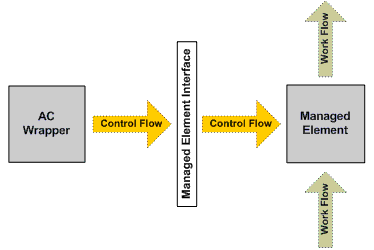|
|
|
Introduction
|
|
|
|
The Autonomic System Specification Language (ASSL) is an initiative for self-management of complex systems
whereby the problem of formal specification, validation, and code generation of autonomic systems (ASs)
is approached within a framework. Being a formal method dedicated to autonomic computing (AC), ASSL helps AC
researchers with problem formation, system design, system analysis and evaluation, and system implementation. The framework
provides a powerful formal notation and suitable mature tool support that allow ASSL specifications to be edited and
validated and Java code to be generated from any valid specification.
|
|
|
|
 One of the noteworthy means of AC development in ASSL is the separation of the AC features from the system-service features.
Hence, ASSL helps to model and generate special AC wrappers in the form of ASs that embed the components of non-AC
systems. The latter are considered as managed elements, controlled by the AS in question. In general, a managed element is a
separate software system performing services. ASSL emphasizes the AC functionality and architecture, but not a managed elementís
functionality and architecture. Instead, the emphasis is on the interface needed to control a managed element. Here, ASSL provides an
abstraction of the managed elements through this interface.
One of the noteworthy means of AC development in ASSL is the separation of the AC features from the system-service features.
Hence, ASSL helps to model and generate special AC wrappers in the form of ASs that embed the components of non-AC
systems. The latter are considered as managed elements, controlled by the AS in question. In general, a managed element is a
separate software system performing services. ASSL emphasizes the AC functionality and architecture, but not a managed elementís
functionality and architecture. Instead, the emphasis is on the interface needed to control a managed element. Here, ASSL provides an
abstraction of the managed elements through this interface.
|
|
|
|